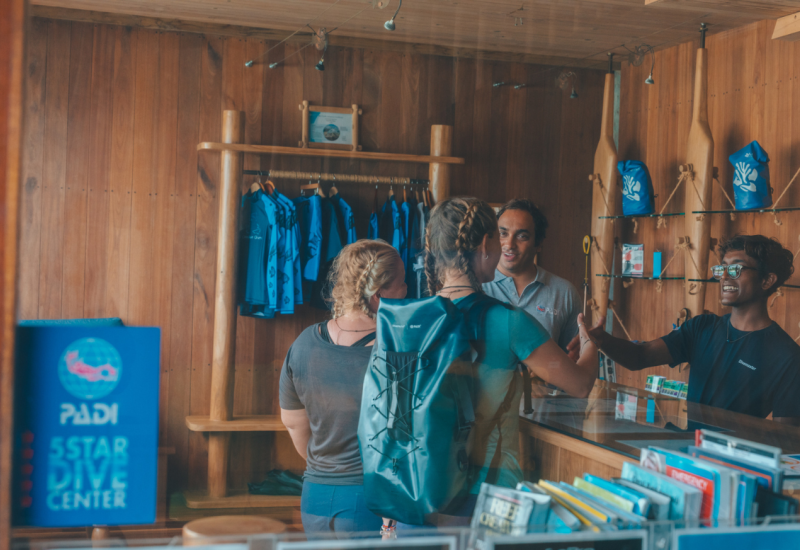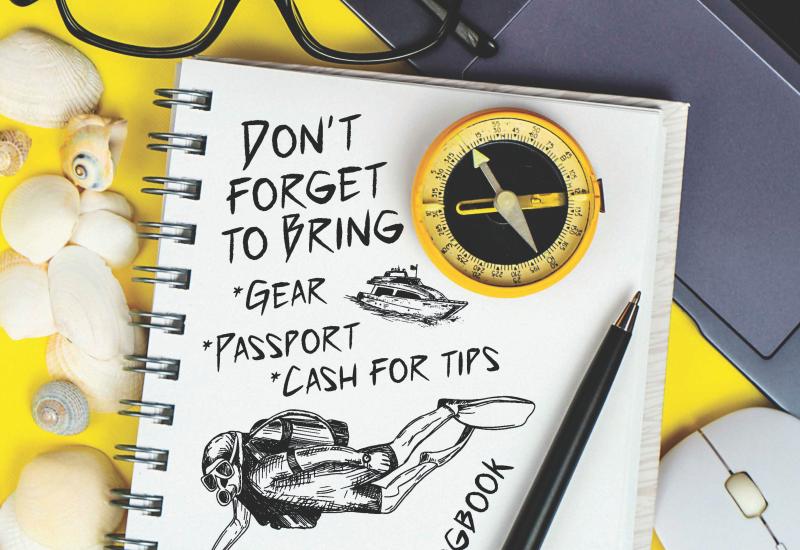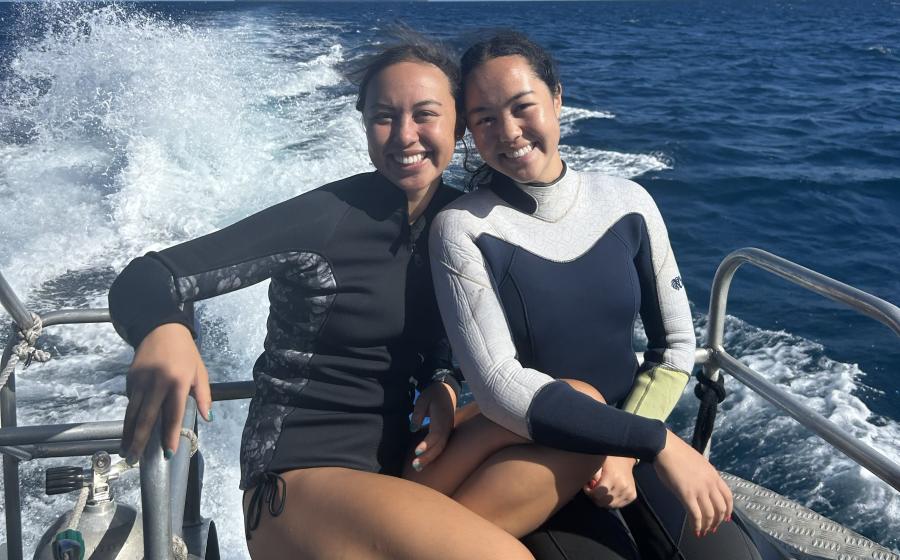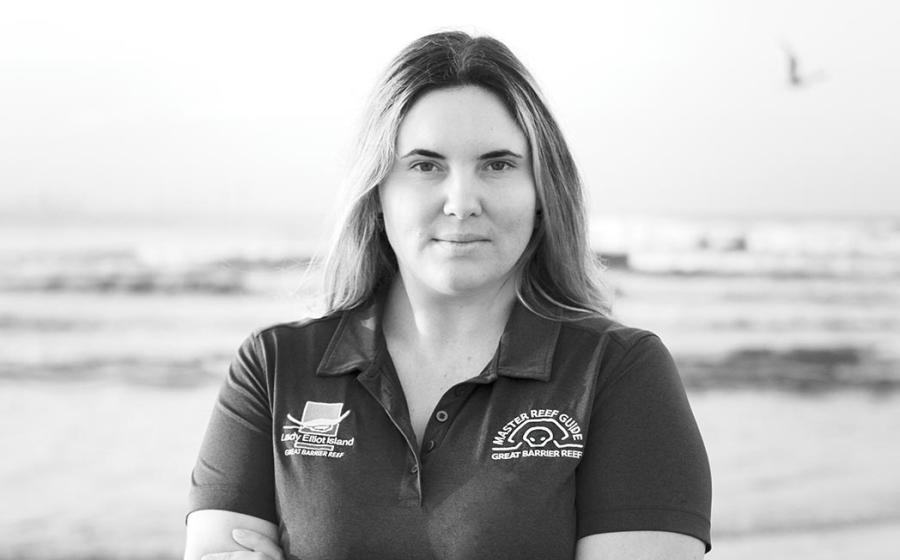Liveaboard: Your Own Private Caribbean
The corkscrewing exit at one of the British Virgin Islands’ most unique dive sites, Grand Central Station, is 15 feet overhead. The tunnel cut by the tides through the headland near Muskmelon Bay will deliver us back into the daylight. But the surge is churning our planned exit point into a foamy mousse. Emily Parsons — captain of the 105-foot live-aboard, Cuan Law — signals to exit the cavern on the other side, where we originally finned in. I hardly mind a repeat of what we’ve just seen, shining my torch back into the tunnels sprouting off the cavern’s belly where thousands of iridescent eyes — banded coral shrimp, lobsters, who knows what else — glow. Dive sites in the British Virgin Islands brim with colorful fish and reefs rife with sea fans and corals. The biggest lure, of course, is the wreck of the RMS Rhone — a haunting dive where you practically hear the whisper of the hurricane-felled behemoth’s dramatic story of many lives lost in 1867. But this particular cavern has been a fun surprise, one of many during my stay aboard the Cuan Law.
“The Cuan is in a very particular niche — it’s not a hard-core liveaboard,” owner Annie Muirhead tells me. “It’s more of a luxury liveaboard, and diving is one of the activities we offer.” In addition to full scuba facilities, the trimaran carries sea kayaks, Hobie Cats and dinghies that can tow you for a wakeboard session while you’re off-gassing. It’s as much a pleasure cruiser as a diving boat, evidenced by the contented nondiving spouses chilling in hammocks on the top deck and snorkeling around the reefs surrounding our anchorages.
One evening, I become a pleasure cruiser too. The sun is setting on another day’s diving, and we have Muskmelon Bay to ourselves. I slip off the Cuan’s stern into a kayak and paddle to the craggy cliffs, maneuvering the kayak within a few feet of comical blue-footed booby birds nesting in rocks covered with cactuses. They shift their feet, getting a load of the interloper. For a moment, I feel like their paradise is mine too.
British Virgin Islands Dive Guide
At the start of each charter, the Cuan Law’s captain has a chat with guests to gauge individual interests, and to determine whether the week’s itinerary takes in beach bar culture on islands like Jost Van Dyke or tends more to lesser-known and remote anchorages at spots like Muskmelon Bay and Anegada (or, perhaps, a mix of both). The ratio of divers to nondivers on board dictates the schedule to some degree, but three daily dives are the norm.
“We can make things more adventurous for those who want adventures, with cave dives and taking the dinghy to the pinnacles at Santa Monica Rock,” says Parsons, “or we can keep it to beaches and bars. It’s all down to the guests.”
Whatever the itinerary, a full day of diving on the RMS Rhone is always on the schedule, with at least two daytime dives to explore the bow and stern (and rub the shiny porthole for good luck, of course), and a night dive on this erstwhile royal mail ship that sank in 1867 off Salt Island during a hurricane. A big advantage of diving the Rhone from the Cuan Law is that dive times are usually planned outside of the day-boat rush, so you just might have the wreck to yourselves.
Capt. Parsons knows our group is up for some adventure. One morning, after a peaceful night in the sheltered anchorage of Muskmelon Bay, she tells me she’s got a fun dive planned nearby. We take the dinghy about five minutes away, to a headland, to dive Grand Central Station — a cavern with a tunneled entrance carved out by pounding waves discovered by Cuan Law’s owner, Duncan Muirhead. We slink into its yawning mouth alongside an enormous octopus, our torches illuminated to reveal the residents inside. Tunnels snaking off the main chamber glow with thousands of orange eyes of lobsters and shrimp, and squirrelfish swim skittishly past us. At one point, we raise our heads into a hidden antechamber — a pocket of air 50 feet below the surface that’s been dubbed the Telephone Booth.
The days follow with fun dives on shallow, colorful coral reefs and wrecks where we spot all the favorite Caribbean denizens — turtles, nurse sharks, moray, rays, schooling French grunts and a mating octopus pair.
The highlight for me comes on our last night during a dive on the small wooden wreck of the Fearless, a purpose-sunk trawler rumored to be the sister ship of Jacques Cousteau’s famed Calypso. It’s a small wreck compared with the Rhone, but has more life than I’ve ever seen on a single night dive. Our torches send shadows through the rotting wooden boards of the hull, and everywhere I look something is returning my gaze. Enormous crabs flex their claws in defense from holes in the hull, and arrow crabs dance atop their tiny blue claws. Stoplight parrotfish, banded coral shrimp, bright-red hermit crabs and groupers getting their gills cleaned by shrimp — they all stare back at me in my torch’s beam. On the safety stop, I move my hand through the water, which glows with phosphorescence. It’s a sweet finish to a perfect sailing and diving adventure in the BVI.
NEED TO KNOW
When to Go: You can dive year-round in the BVI; hurricane season is June through October. In addition to six-night BVI itineraries, the Cuan Law also runs a spring trip to St. Martin with stops in Saba, Anguilla and Sombrero.
Dive Conditions: Water temps stays between 72 and 82 degrees year-round. Bring a 3 mm wetsuit for fall or winter, and a shorty or skin for the summer.
Operator: With 10 cabins, all with private bathrooms and showers, Cuan Law is the finest liveaboard in the BVI. Diving is done from the stern deck or via short dinghy rides. Meals are hearty, with hors d’oeuvres and Painkiller cocktails proffered at sunset. Topside fun is par for the course.

Carlos VillochIts encrusting marine life makes the Rhone one of the prettiest wrecks in the Caribbean.
The corkscrewing exit at one of the British Virgin Islands’ most unique dive sites, Grand Central Station, is 15 feet overhead. The tunnel cut by the tides through the headland near Muskmelon Bay will deliver us back into the daylight. But the surge is churning our planned exit point into a foamy mousse. Emily Parsons — captain of the 105-foot live-aboard, Cuan Law — signals to exit the cavern on the other side, where we originally finned in. I hardly mind a repeat of what we’ve just seen, shining my torch back into the tunnels sprouting off the cavern’s belly where thousands of iridescent eyes — banded coral shrimp, lobsters, who knows what else — glow. Dive sites in the British Virgin Islands brim with colorful fish and reefs rife with sea fans and corals. The biggest lure, of course, is the wreck of the RMS Rhone — a haunting dive where you practically hear the whisper of the hurricane-felled behemoth’s dramatic story of many lives lost in 1867. But this particular cavern has been a fun surprise, one of many during my stay aboard the Cuan Law.

Steve SimonsenThe Rhone is a wonderland for divers, and a terrific night dive.
“The Cuan is in a very particular niche — it’s not a hard-core liveaboard,” owner Annie Muirhead tells me. “It’s more of a luxury liveaboard, and diving is one of the activities we offer.” In addition to full scuba facilities, the trimaran carries sea kayaks, Hobie Cats and dinghies that can tow you for a wakeboard session while you’re off-gassing. It’s as much a pleasure cruiser as a diving boat, evidenced by the contented nondiving spouses chilling in hammocks on the top deck and snorkeling around the reefs surrounding our anchorages.
One evening, I become a pleasure cruiser too. The sun is setting on another day’s diving, and we have Muskmelon Bay to ourselves. I slip off the Cuan’s stern into a kayak and paddle to the craggy cliffs, maneuvering the kayak within a few feet of comical blue-footed booby birds nesting in rocks covered with cactuses. They shift their feet, getting a load of the interloper. For a moment, I feel like their paradise is mine too.

Carlos VillochA diver explores the easily accessible hull of the Rhone.
British Virgin Islands Dive Guide
At the start of each charter, the Cuan Law’s captain has a chat with guests to gauge individual interests, and to determine whether the week’s itinerary takes in beach bar culture on islands like Jost Van Dyke or tends more to lesser-known and remote anchorages at spots like Muskmelon Bay and Anegada (or, perhaps, a mix of both). The ratio of divers to nondivers on board dictates the schedule to some degree, but three daily dives are the norm.
“We can make things more adventurous for those who want adventures, with cave dives and taking the dinghy to the pinnacles at Santa Monica Rock,” says Parsons, “or we can keep it to beaches and bars. It’s all down to the guests.”

Rod KleinEnormous crabs flex their claws in defense from holes in the Rhone's hull, and arrow crabs dance atop their tiny blue claws.
Whatever the itinerary, a full day of diving on the RMS Rhone is always on the schedule, with at least two daytime dives to explore the bow and stern (and rub the shiny porthole for good luck, of course), and a night dive on this erstwhile royal mail ship that sank in 1867 off Salt Island during a hurricane. A big advantage of diving the Rhone from the Cuan Law is that dive times are usually planned outside of the day-boat rush, so you just might have the wreck to yourselves.
Capt. Parsons knows our group is up for some adventure. One morning, after a peaceful night in the sheltered anchorage of Muskmelon Bay, she tells me she’s got a fun dive planned nearby. We take the dinghy about five minutes away, to a headland, to dive Grand Central Station — a cavern with a tunneled entrance carved out by pounding waves discovered by Cuan Law’s owner, Duncan Muirhead. We slink into its yawning mouth alongside an enormous octopus, our torches illuminated to reveal the residents inside. Tunnels snaking off the main chamber glow with thousands of orange eyes of lobsters and shrimp, and squirrelfish swim skittishly past us. At one point, we raise our heads into a hidden antechamber — a pocket of air 50 feet below the surface that’s been dubbed the Telephone Booth.

Steve SimonsenA kayak is a perfect way to get from the Cuan Law to the pristine beaches nearby.
The days follow with fun dives on shallow, colorful coral reefs and wrecks where we spot all the favorite Caribbean denizens — turtles, nurse sharks, moray, rays, schooling French grunts and a mating octopus pair.
The highlight for me comes on our last night during a dive on the small wooden wreck of the Fearless, a purpose-sunk trawler rumored to be the sister ship of Jacques Cousteau’s famed Calypso. It’s a small wreck compared with the Rhone, but has more life than I’ve ever seen on a single night dive. Our torches send shadows through the rotting wooden boards of the hull, and everywhere I look something is returning my gaze. Enormous crabs flex their claws in defense from holes in the hull, and arrow crabs dance atop their tiny blue claws. Stoplight parrotfish, banded coral shrimp, bright-red hermit crabs and groupers getting their gills cleaned by shrimp — they all stare back at me in my torch’s beam. On the safety stop, I move my hand through the water, which glows with phosphorescence. It’s a sweet finish to a perfect sailing and diving adventure in the BVI.

Bill HarriganTrimaran Cuan Law plies the waters of the British Virgin Islands.
NEED TO KNOW
When to Go: You can dive year-round in the BVI; hurricane season is June through October. In addition to six-night BVI itineraries, the Cuan Law also runs a spring trip to St. Martin with stops in Saba, Anguilla and Sombrero.
Dive Conditions: Water temps stays between 72 and 82 degrees year-round. Bring a 3 mm wetsuit for fall or winter, and a shorty or skin for the summer.
Operator: With 10 cabins, all with private bathrooms and showers, Cuan Law is the finest liveaboard in the BVI. Diving is done from the stern deck or via short dinghy rides. Meals are hearty, with hors d’oeuvres and Painkiller cocktails proffered at sunset. Topside fun is par for the course.










